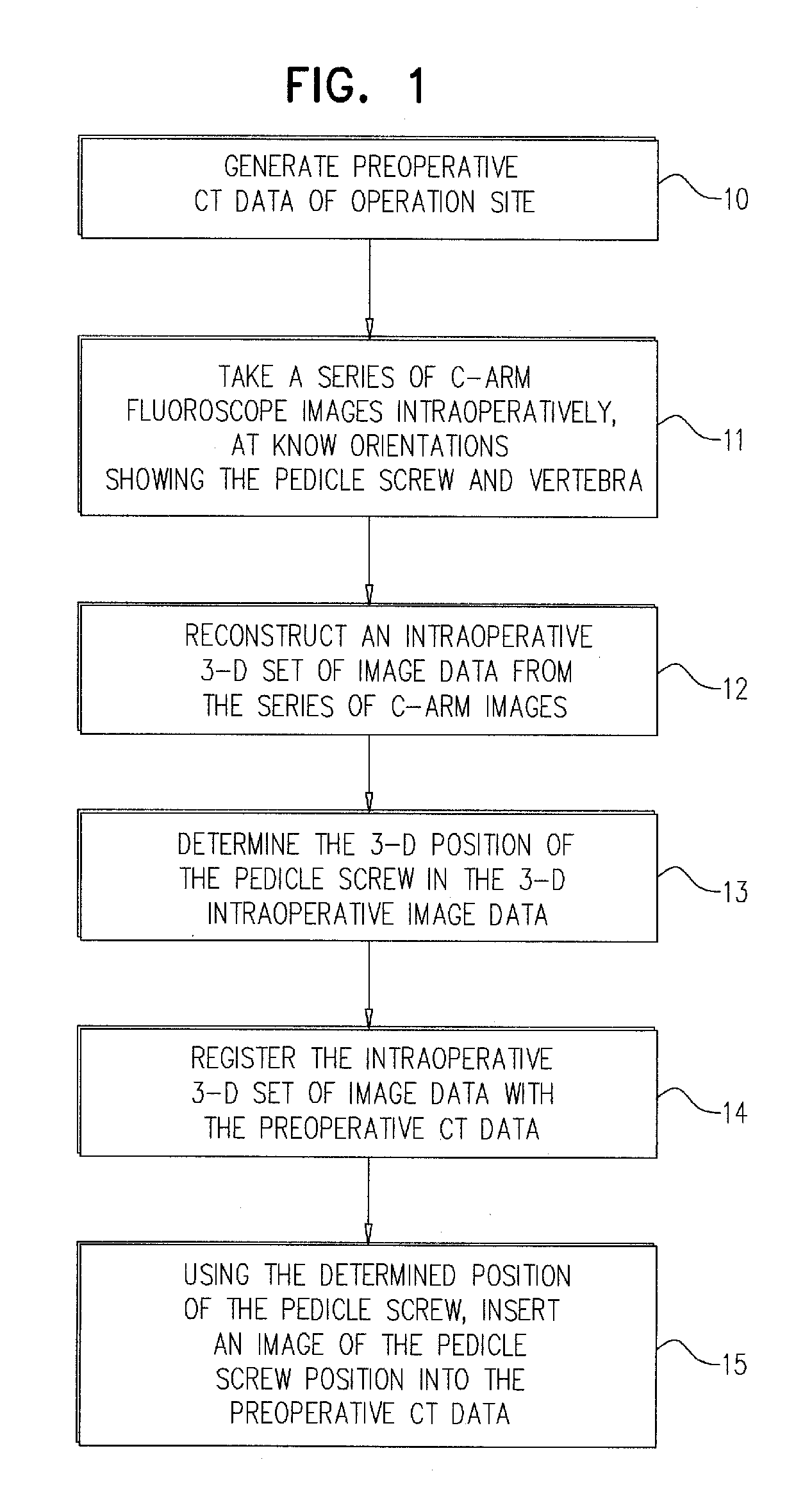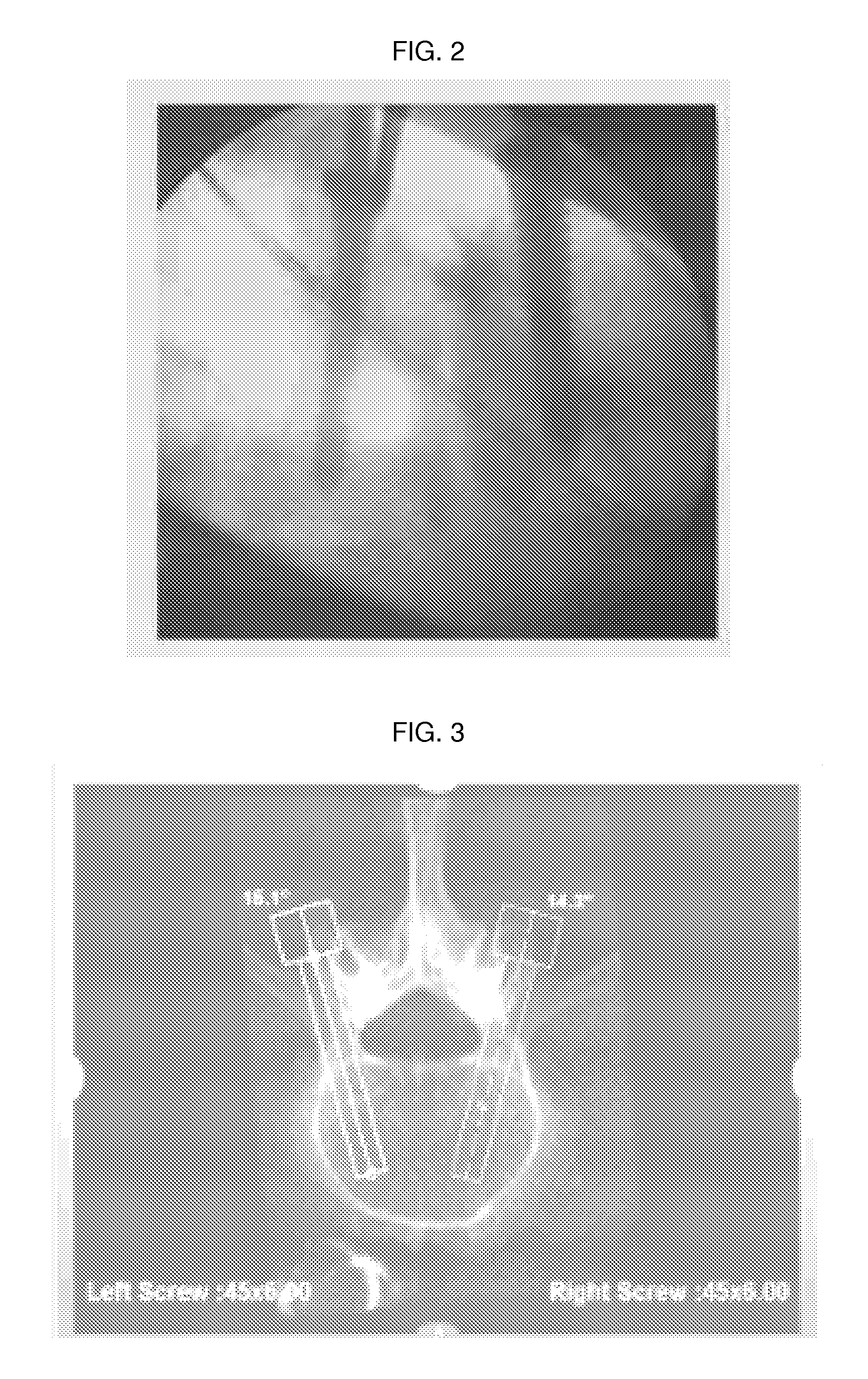On-site verification of implant positioning
a technology of implant positioning and onsite verification, which is applied in the field of intraoperative fluoroscopic imaging of orthopedic implants, can solve the problems of difficult to interpret x-ray images, difficult to perform verification, and weak contrast, and achieve high contrast implants, high contrast, and high accuracy. the effect of accuracy
- Summary
- Abstract
- Description
- Claims
- Application Information
AI Technical Summary
Benefits of technology
Problems solved by technology
Method used
Image
Examples
Embodiment Construction
[0042]Reference is now made to FIG. 1, which illustrates schematically a flow chart describing an exemplary method of the present application, by which the position of a vertebral pedicle screw can be accurately determined intraoperatively from a number of two-dimensional C-arm images taken in the operating room. Although the procedure is described in terms of imaging using a C-arm, this is understood to be only one method by which it is possible to obtain a series of two-dimensional intraoperative images at known orientations, and the disclosure is not intended to be limited to use of the C-arm method.
[0043]In step 10, a preoperative CT set of images of the operation site is generated and stored in the control system memory. The surgeon may then plan the intended position of the pedicle screw insert on this set of three dimensional preoperative images.
[0044]In step 11, a series of C-arm fluoroscope images are taken intraoperatively at known orientations of the C-arm, the images sho...
PUM
 Login to View More
Login to View More Abstract
Description
Claims
Application Information
 Login to View More
Login to View More - R&D
- Intellectual Property
- Life Sciences
- Materials
- Tech Scout
- Unparalleled Data Quality
- Higher Quality Content
- 60% Fewer Hallucinations
Browse by: Latest US Patents, China's latest patents, Technical Efficacy Thesaurus, Application Domain, Technology Topic, Popular Technical Reports.
© 2025 PatSnap. All rights reserved.Legal|Privacy policy|Modern Slavery Act Transparency Statement|Sitemap|About US| Contact US: help@patsnap.com



